DJI Mavic 2 Pro vs DJI Mavic Air 2: Ultimate Drone Specs Comparison
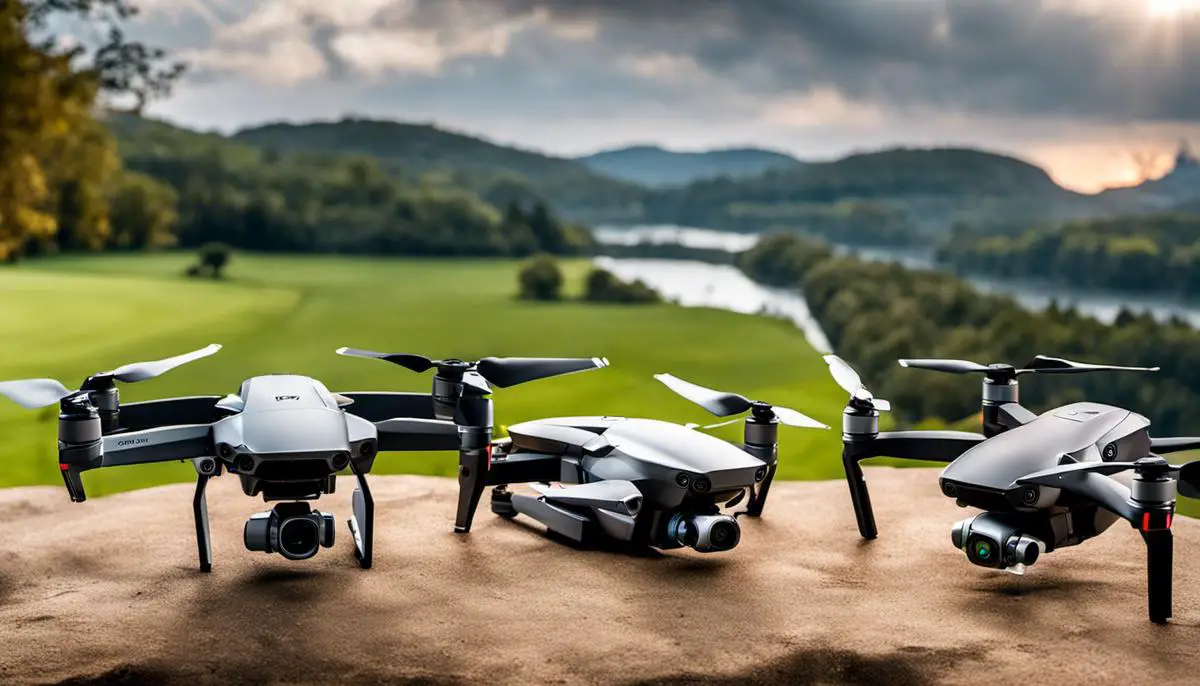
DJI Mavic 2 Pro vs DJI Mavic Air 2? Find the Perfect Drone for Your Aerial Photography Needs
Delving into the captivating world of drones, two sophisticated devices stand out for their remarkable features and designs – the DJI Mavic 2 Pro and the DJI Mavic Air 2. Released to an eager market enamored with their impressive specifications, these drones have quickly risen in popularity among novices and accomplished drone users alike. Refined camera capabilities coupled with excellent flight performance lay the groundwork for a comprehensive evaluation that sets these two beasts of technology in comparison.
Overview of the DJI Mavic 2 Pro and DJI Mavic Air 2
Overview of the DJI Mavic 2 Pro
The renowned drone manufacturer DJI Tech released the high-end DJI Mavic 2 Pro in August 2018. It’s known for its robust set of features and impressive performance. It’s equipped with a Hasselblad camera that produces 20MP images and 4K HDR video, making it popular among professional photographers and videographers. With its omnidirectional obstacle sensing, the Mavic 2 Pro provides safer flights, a welcome feature for both beginners and advanced users alike. Its battery life stands out at around 31 minutes on a single charge. It has a maximum speed of 44 mph and can transmit live video from up to 5 miles away.
Overview of the DJI Mavic Air 2
Launched in April 2020, the DJI Mavic Air 2 is a more compact and lightweight drone compared to the Mavic 2 Pro. Despite its smaller size, it does not fall short on specifications. It offers 48 MP images and 4K-60 fps video with the capability for 4x Slow Motion in 1080p at 120 fps or 8x Slow Motion in 1080p at 240 fps. It’s equipped with advanced obstacle detection technology and can fly for 34 minutes on a single battery charge. It also features AirSense’ technology to pick up signals from manned aircraft nearby for added safety. The drone has a maximum speed of 42.5 mph and can transmit live video from up to 6.2 miles away.
Side-by-Side Comparison: DJI Mavic 2 Pro and DJI Mavic Air 2
When evaluating the DJI Mavic 2 Pro against the DJI Mavic Air 2, you’ll notice several critical distinctions. The Mavic 2 Pro excels in terms of image and video quality owing to its Hasselblad camera, which provides exceptional color accuracy. Conversely, the Mavic Air 2 outshines with its maximum resolution of 48MP, significantly higher than the Pro’s 20MP. Additionally, the Mavic Air 2 is capable of shooting slow-motion video footage at an impressive 240 fps, a feature absent on the 2 Pro.
Moving onto flight performance, the Mavic Air 2 has an edge with a 34-minute flight duration, slightly longer than the 2 Pro’s 31 minutes. Although both drones match in optimal speed, the Air 2 stands out with a marginally extended video transmission distance.
In terms of storage, the Mavic 2 Pro houses 8GB of internal memory, while the Mavic Air 2 outdoes it with a 16GB capacity. For those valuing portability, the Mavic Air 2, being smaller and lighter than the Mavic 2 Pro, is an appealing feature.
As for cost, the Mavic 2 Pro, designed for professional use, carries a heftier price tag than the more consumer-focused Mavic Air 2. The final choice between the two drones will depend on individual needs, budget, and, of course, personal preference.
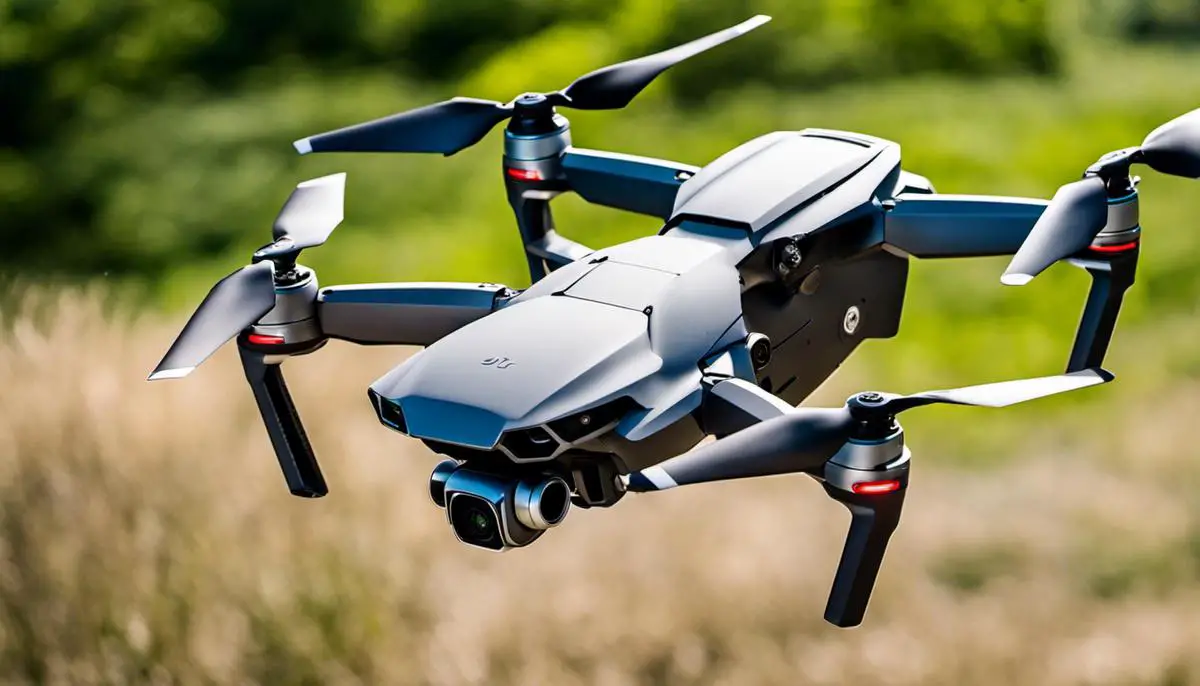
Camera Specifications
Detailed Overview: DJI Mavic 2 Pro’s Camera
The DJI Mavic 2 Pro is outfitted with a 1-inch CMOS sensor delivered by renowned professional camera manufacturer, Hasselblad. This notable sensor empowers the drone to absorb more light, leading to enhanced image quality under disparate lighting conditions. Correspondingly, the Mavic 2 Pro can shoot stills at a maximum resolution of 20 megapixels.
When exploring video capacities, the Mavic 2 Pro can record 4K UHD footage at a speed of up to 30 frames per second. Importantly, it supports a color profile of up to 10 bits, enabling the recording of over a billion colors for vividly realistic and rich footage.
Additionally, the Mavic 2 Pro’s camera comes with an adjustable aperture from f/2.8 to f/11. This adaptability benefits drone usage across diverse lighting conditions, from bright daylight to dimly lit settings. It provides multiple photography modes, Burst single shot, Auto Exposure Bracketing (AEB), and Interval mode.
DJI Mavic Air 2 Camera Specifications
The DJI Mavic Air 2, on the other hand, uses a smaller 1/2-inch CMOS sensor. However, don’t let the size fool you, this drone is capable of capturing stunning images with its 48 megapixel maximum resolution. While this drone might not perform as well under low light conditions as the Mavic 2 Pro, it still delivers excellent image quality in good lighting.
In the video department, the Mavic Air 2 also offers 4K UHD recording, but it does so at a higher frame rate, up to 60 frames per second. This makes the Mavic Air 2 a great choice if you are looking for silky smooth motion in your videos. However, its color profile is limited to 8 bits, resulting in fewer color details compared to the Mavic 2 Pro.
Like the Mavic 2 Pro, the Mavic Air 2 also has an adjustable aperture ranging from f/2.8 to f/11. Its photography modes include Single Shot, Burst Shooting, Auto Exposure Bracketing (AEB), Interval mode, and the SmartPhoto mode, which uses scene recognition and deep learning to automatically enhance photos.
Overview
Generally speaking, the Mavic 2 Pro stands out with its superior sensor size and richer color profile, whereas the Mavic Air 2 prides itself on its stronger resolution and more fluid frame rate.
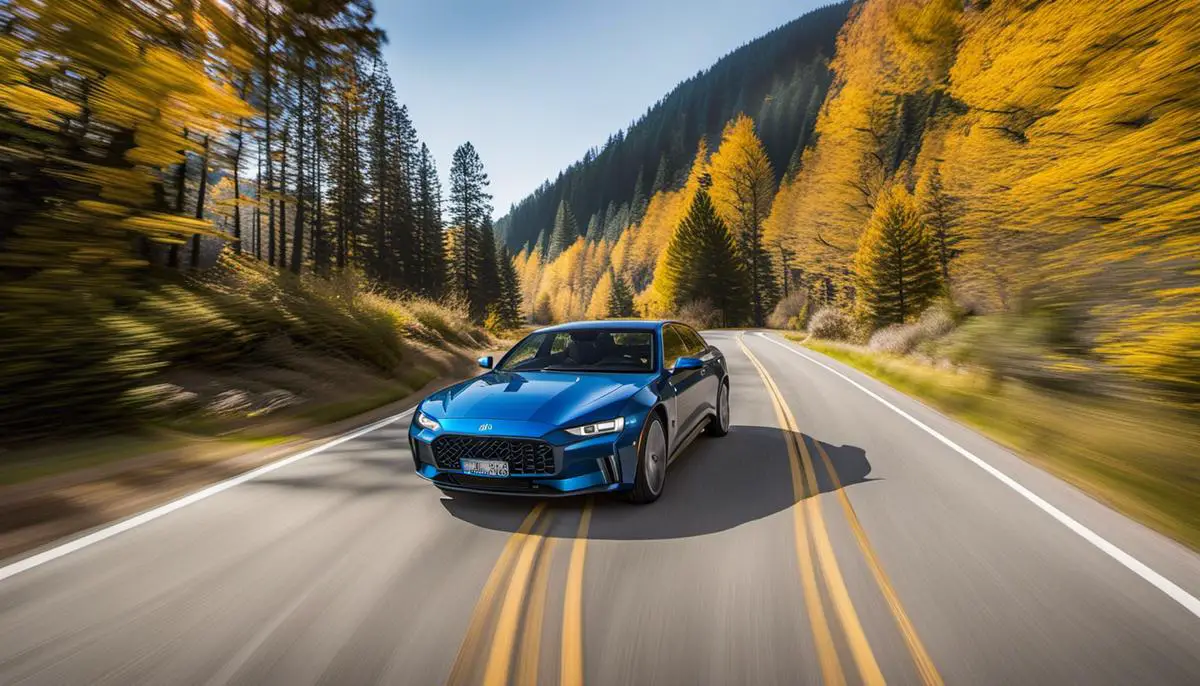
Flight Performance and Battery Life
A Face-off Between DJI Mavic 2 Pro and DJI Mavic Air 2: Flight Performance and Battery Life
Exploring the performance between the two drone models, the DJI Mavic 2 Pro hits a max speed of 44.7 mph (72 kph), slightly higher than the DJI Mavic Air 2’s maximum speed of 42.5 mph (68.4 kph). A minor difference, but one that could give the Mavic 2 Pro an edge in capturing action shots at high speed.
We then move to the maximum flight distance. Here, the Mavic 2 Pro offers around 8 miles (13 km) of range, but this could change based on conditions and controlling signal strength. In contrast, the Mavic Air 2 trails behind a little, with its max flight distance sitting below 6.2 miles, roughly 10 km.
The Mavic 2 Pro and Mavic Air 2 don’t disappoint in the wind resistance department; both are capable of managing wind speeds up to 23.6 mph, or 38 kph. This enables both drones to maintain stability and ensure quality footage, even in challenging weather conditions.
When looking at GPS features and obstacle sensing, the Mavic 2 Pro leads with its omnidirectional sensing system, which provides forward, backward, upward, downward, and sideways detection. The Mavic Air 2, however, is armed with APAS 3.0 (Advanced Pilot Assistance Systems), which supports forward, backward, and downward obstacle sensing.
Turning our attention to the all-important battery life, the Mavic 2 Pro features a larger battery and a commendable flight time of 31 minutes. The Mavic Air 2, however, pulls ahead with an exceptional flight time of up to 34 minutes, with its efficient design and lighter weight providing the edge.
In summary, both the DJI Mavic 2 Pro and DJI Mavic Air 2 present exceptional flight performance and robust build quality; The Mavic 2 Pro shines with its higher speed and superior obstacle sensing, while the Mavic Air 2 outperforms with its longer flight duration and enhanced wind resistance abilities.

Design and Build Quality
Examining the Form Factor: An Intricate Look at The DJI Mavic 2 Pro’s Design and Build Quality
The DJI Mavic 2 Pro catches the eye with a sturdy and compact design. In its unfolded state, it measures 322×242×84 mm and reduces down to 214×91×84 mm when folded, enabling easy portability. Despite being relatively heavier at around 2 lbs (907g), the premium materials and solid build is testimony to DJI’s high-quality manufacturing standards, presented in sleek grey color.
Certain characteristics set the Mavic 2 Pro apart, including obstacle sensors positioned on every side, foldable propellers, and an adjustable aperture camera. Built to endure diverse weather conditions, the drone is equipped with an in-built gimbal stabilizer, enhancing its photo and video capture capabilities.
The Mavic 2 Pro’s design shines with its omnidirectional obstacle sensing, an element that contributes to improved flying confidence and safety.
Design and Build Quality of DJI Mavic Air 2
The DJI Mavic Air 2, on the other hand, is smaller and lighter than the Mavic 2 Pro. With dimensions of 180×97×74 mm when folded and 183×253×77 mm when unfolded, it’s more compact than its counterpart. This drone weighs around 570g (1.26 lbs), significantly lighter than the Mavic 2 Pro, which enhances its portability, making it a great travel companion for aerial photographers and videographers.
The DJI Mavic Air 2 is constructed with high-quality, durable plastic, giving it a sturdy feel. Its sleek gray design closely resembles the form factor of Mavic 2 Pro. A prominent feature of the Mavic Air 2’s design is the three-axis gimbal design that houses a half-inch sensor, providing stability and high-quality imaging. In addition, the drone features advanced obstacle avoidance technology, although unlike the Mavic 2 Pro, it doesn’t include side or top sensors.
The DJI Mavic 2 Pro and the DJI Mavic Air 2 are both renowned for their robust build quality and resilient construction, making these drones a favorite among users. The core difference between the two, however, lies in their advanced features; the Mavic 2 Pro comes equipped with superior obstacle sensing capabilities. On the contrary, the Mavic Air 2 stands out for its lightweight design, a factor that contributes to its high maneuverability.
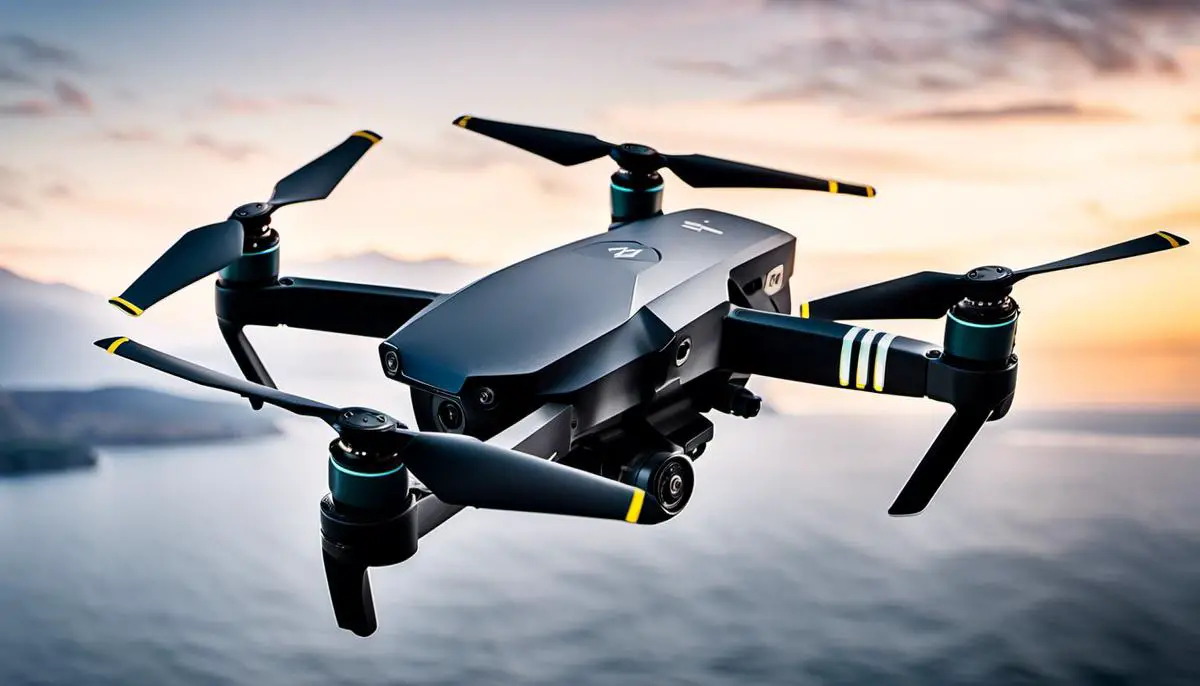
Software and Additional Features
Examining the Software and Additional Features of DJI Mavic 2 Pro and DJI Mavic Air 2
In the realm of software and additional features, both the DJI Mavic 2 Pro and DJI Mavic Air 2 exhibit individual prowess. The interface of the DJI Mavic 2 Pro is tailored towards catering to professional needs, specifically those of proficient pilots and industry professionals. Conversely, the DJI Mavic Air 2 aims to appeal to a wider audience, featuring a user-friendly interface that novice users and hobbyists can easily navigate.
Intelligent Flight modes
One of the key features of both drones is their Intelligent Flight modes. The Mavic 2 Pro includes ActiveTrack 2.0, Hyperlapse, and POI 2.0 (Point of Interest), which all help the drone follow moving subjects, do time-lapse filming, and circle a specific object on autopilot, respectively. Meanwhile, the Mavic Air 2 also includes similar features, with ActiveTrack 3.0, Hyperlapse, and POI 3.0, showing a slight improvement over their predecessors.
Safety
Safety is paramount in both Mavic models. The Mavic 2 Pro is equipped with Omnidirectional Obstacle Sensing, which includes sensors on all sides of the drone for better spatial awareness and obstacle avoidance. The Mavic Air 2, while having forward, backward, and downward sensors, lacks side and upward ones, making the Mavic 2 Pro a safer bet for obstacle-heavy environments.
Extra features
Extra features like ActiveTrack and HyperLapse make both drones stand out. The Mavic 2 Pro’s ActiveTrack 2.0 offers precise recognition, high-speed tracking, and obstacle sensing, rendering it an efficient tool for professional filmmakers. The Mavic Air 2, with its ActiveTrack 3.0, has increased subject identification ability and provides a better following and tracking experience. Apart from this, both drones offer Hyperlapse, allowing the capture of stunning aerial shots and the production of time-lapse videos.
Adjustable aperture
The DJI Mavic Pro 2 offers an adjustable aperture ranging from f/2.8-f/11, which provides more flexibility in manipulating image results, especially in light-sensitive conditions, while the Mavic Air 2 lacks this feature, thus defining the Mavic 2 Pro as a more professional-grade platform.
Transmission system
In terms of the transmission system, the Mavic 2 Pro uses DJI’s OcuSync 2.0 for a stable connection up to 8 km, while the Mavic Air 2 uses the new OcuSync 2.0 with a slightly farther connection of up to 10 km, outperforming its predecessor.
Conclusion
Each drone caters to a different kind of user, making it essential to identify individual needs and requirements. The DJI Mavic 2 Pro is specifically designed for those well-versed in drone navigation and professional photography, offering higher-end features and superior control. On the other hand, the Mavic Air 2 is perfect for those just dipping their toes into drone use, as it simplifies the process without compromising on the quality of photos and videos.
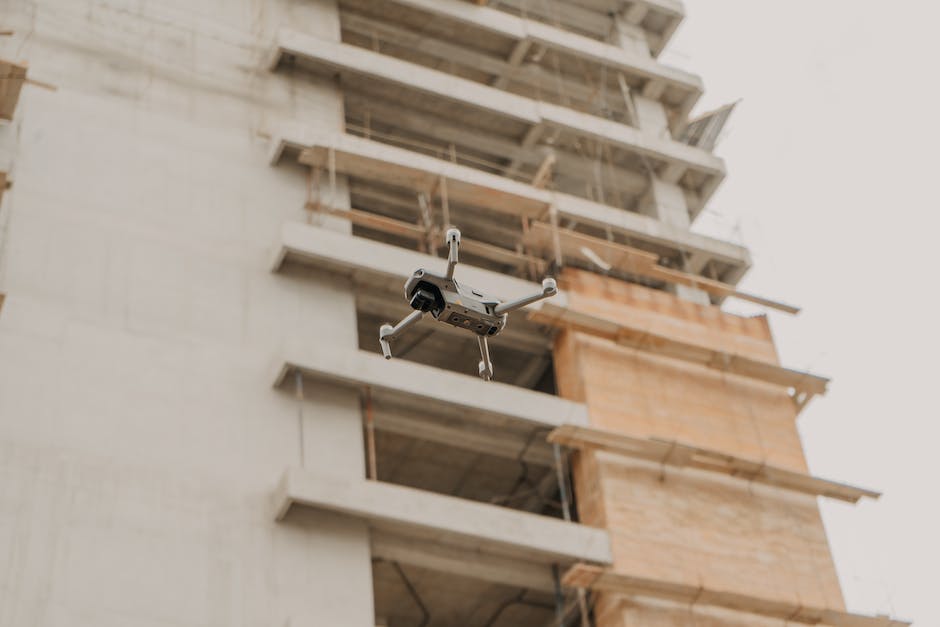
Price and Value for Money
DJI Mavic 2 Pro and DJI Mavic Air 2: Price and Value for Money
The DJI Mavic 2 Pro costs significantly more than the DJI Mavic Air 2, with the price set at around $1599 compared to the $799 of the Mavic Air 2. This is variable depending on location, as well as any ongoing offers or discounts.
When evaluating value for money, both drones are leaders in their respective segments, accommodating a variety of needs and budgets. The Mavic 2 Pro’s top-tier functions, such as an adjustable aperture and Hasselblad camera technology, validate its hefty price tag. It provides exceptional images with a 20 MP camera, 4K video capability at 30 fps, and full HD at 120 fps, as well as an impressive flight duration of 31 minutes. The dynamic range and unprecedented color production truly distinguish this drone.
At its price point, the Mavic Air 2 offers surprisingly high-quality features. It can capture images at 48 MP and record 4K videos at 60 fps, while also offering a longer flight time of 34 minutes compared to the Mavic 2 Pro. Making it the ideal choice for those looking for high-quality aerial footage without the high-end price tag.
The Mavic 2 Pro also includes Omnidirectional Obstacle Sensing for improved flight safety and a range of Intelligent Flight Modes such as Hyperlapse and QuickShots. The Mavic Air 2 also supports these Intelligent Flight Modes and introduces Advanced Pilot Assistance Systems 3.0 for enhanced automatic flight planning.
Choosing the right drone depends on personal needs and budget limitations. The Mavic 2 Pro offers professional-grade images suitable for commercial use, with its top-of-the-line Hasselblad camera, delivering superb color science and dynamic range. A worthwhile premium investment for professionals seeking incredible aerial videography.
On the other hand, the Mavic Air 2 is an excellent option for consumers seeking high-quality footage without the huge cost. Despite the lower price tag, the Mavic Air 2 doesn’t compromise on any features, making it a perfect combination of price, camera performance, and all-round features.
In essence, both drones present phenomenal value for money, but to different users. Determining which drone offers the best balance of price and advanced camera technology depends on the individual’s needs.
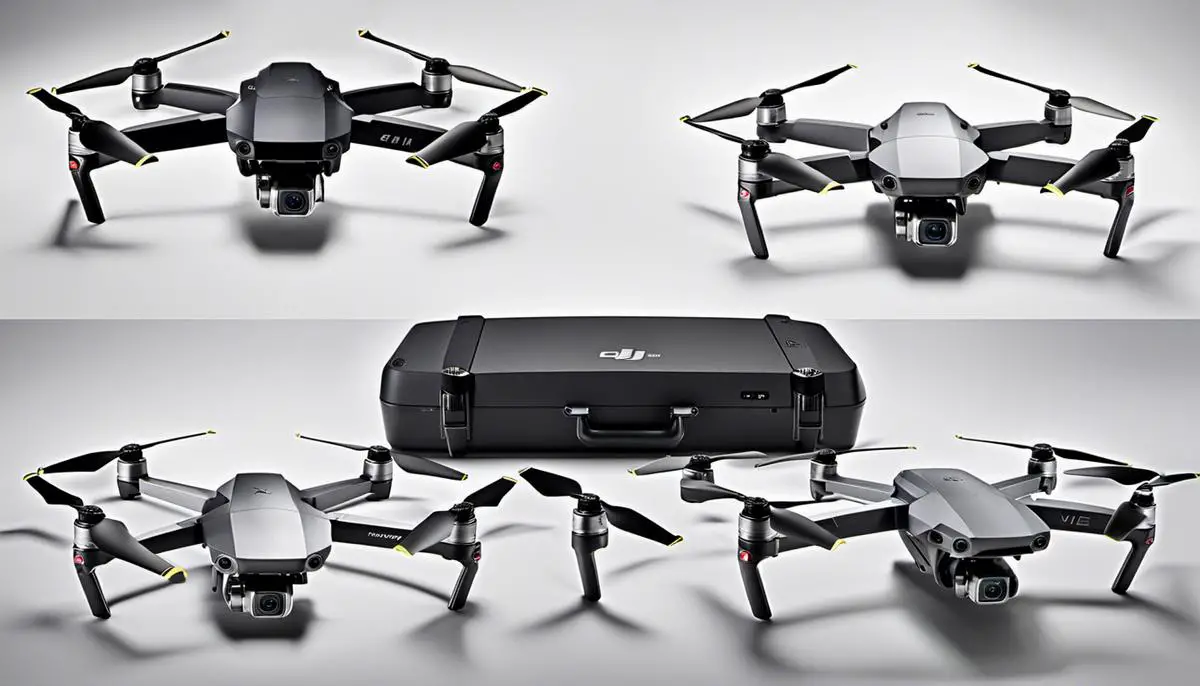
Reflecting on the differing facets assessed, it becomes clear that both the DJI Mavic 2 Pro and DJI Mavic Air 2 come with their own unique strengths and trading points. Drawing from standout features such as camera specifications, performance, design, software, and value for money, prospective buyers can align their preferences with their intentions for usage. For the budding enthusiast or pro-level videographer, discerning the spectrum of capabilities can steer their choice between these two impressive drone models. Therefore, it ultimately relies on user-specific requirements that can range from a desire for impeccable imagery to an emphasis on flight dexterity.
DJI Mavic 2 Pro vs DJI Mavic Air 2: Frequently Asked Questions
What are the key differences between the DJI Mavic 2 Pro and the DJI Mavic Air 2?
The Mavic 2 Pro has a larger 1-inch CMOS sensor camera capable of 20 MP photos and 4K/30 fps video, while the Mavic Air 2 has a 1/2-inch CMOS sensor 12 MP camera capable of 4K/60 fps video. The Mavic 2 Pro also has a longer flight time of 31 minutes, compared to 34 minutes on the Mavic Air 2.
Which drone has the better camera?
The Mavic 2 Pro has the better camera overall with its 1-inch CMOS sensor, adjustable aperture (f2.8-f11), and 20 MP resolution. It performs better in low light conditions. However, the Mavic Air 2 has the advantage of 4K/60 fps video.
What are the differences in obstacle avoidance?
The Mavic Air 2 has enhanced APAS 3.0 obstacle avoidance with sensors on all sides. The Mavic 2 Pro has APAS, but on just the forward, downward, and backward sides.
Which drone is more portable?
The Mavic Air 2 is lighter and smaller when folded. It weighs 570g compared to 907g on the Mavic 2 Pro. The Air 2 is 180x97x84 mm folded, versus 214x91x84 mm on the Mavic 2 Pro.
What is the difference in transmission range?
The Mavic Air 2 has a maximum video transmission range of 6 miles (10 km), compared to 4.3 miles (7km) on the Mavic 2 Pro.
Which drone has the longest flight time?
The Mavic Air 2 has a maximum flight time of 34 minutes, slightly longer than the 31 minutes of the Mavic 2 Pro.
What are the key similarities?
- Both shoot 4K video and 12MP photos
- Foldable, portable designs
- Intelligent flight modes like ActiveTrack 3.0
- OcuSync 2.0 HD transmission system
- Similar max speeds (40-45mph)
So in summary, the Mavic 2 Pro has a better camera and image quality, while the Mavic Air 2 is more portable, has a longer flight time, and has better obstacle avoidance. But both are excellent, high-end consumer drones from DJI.








